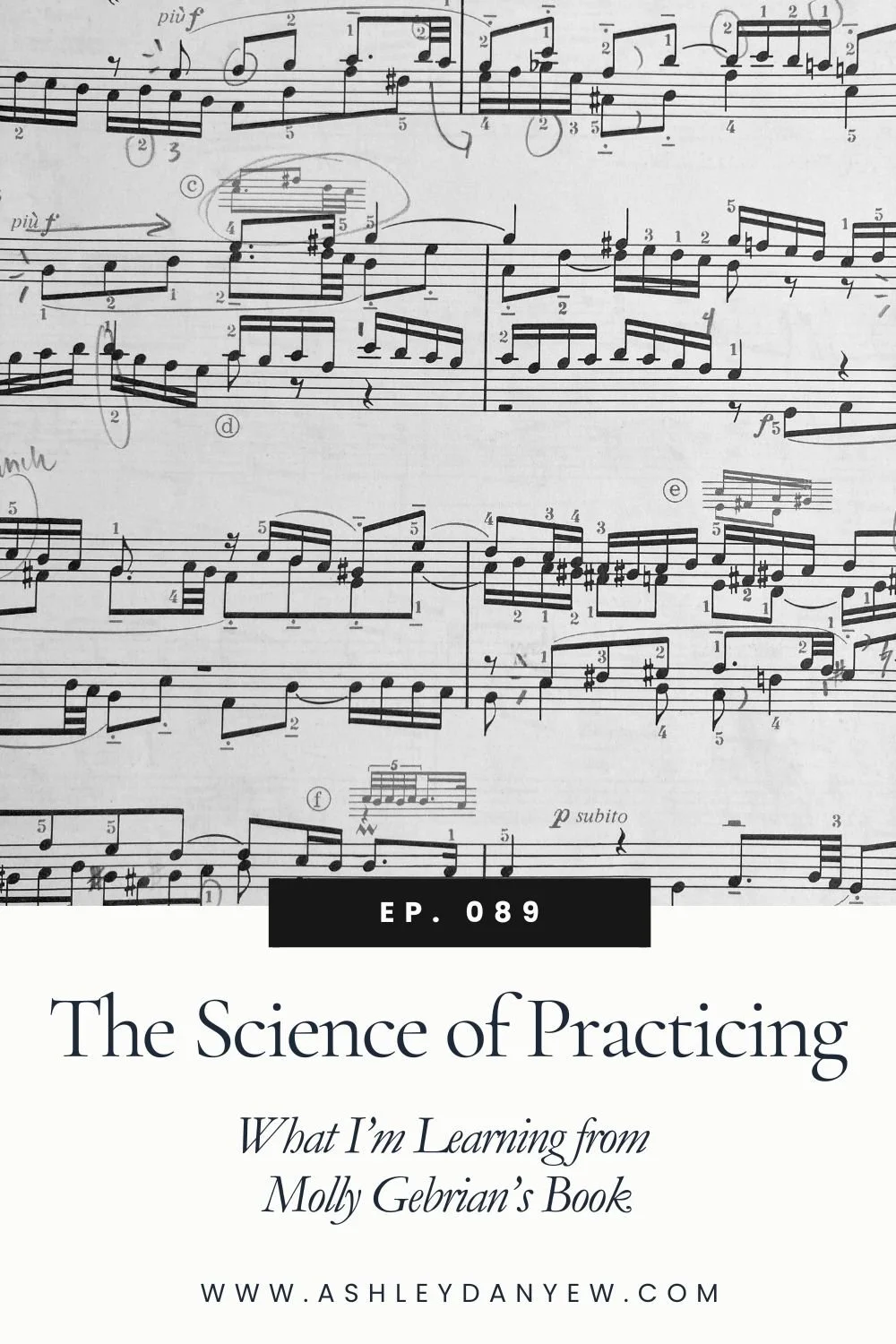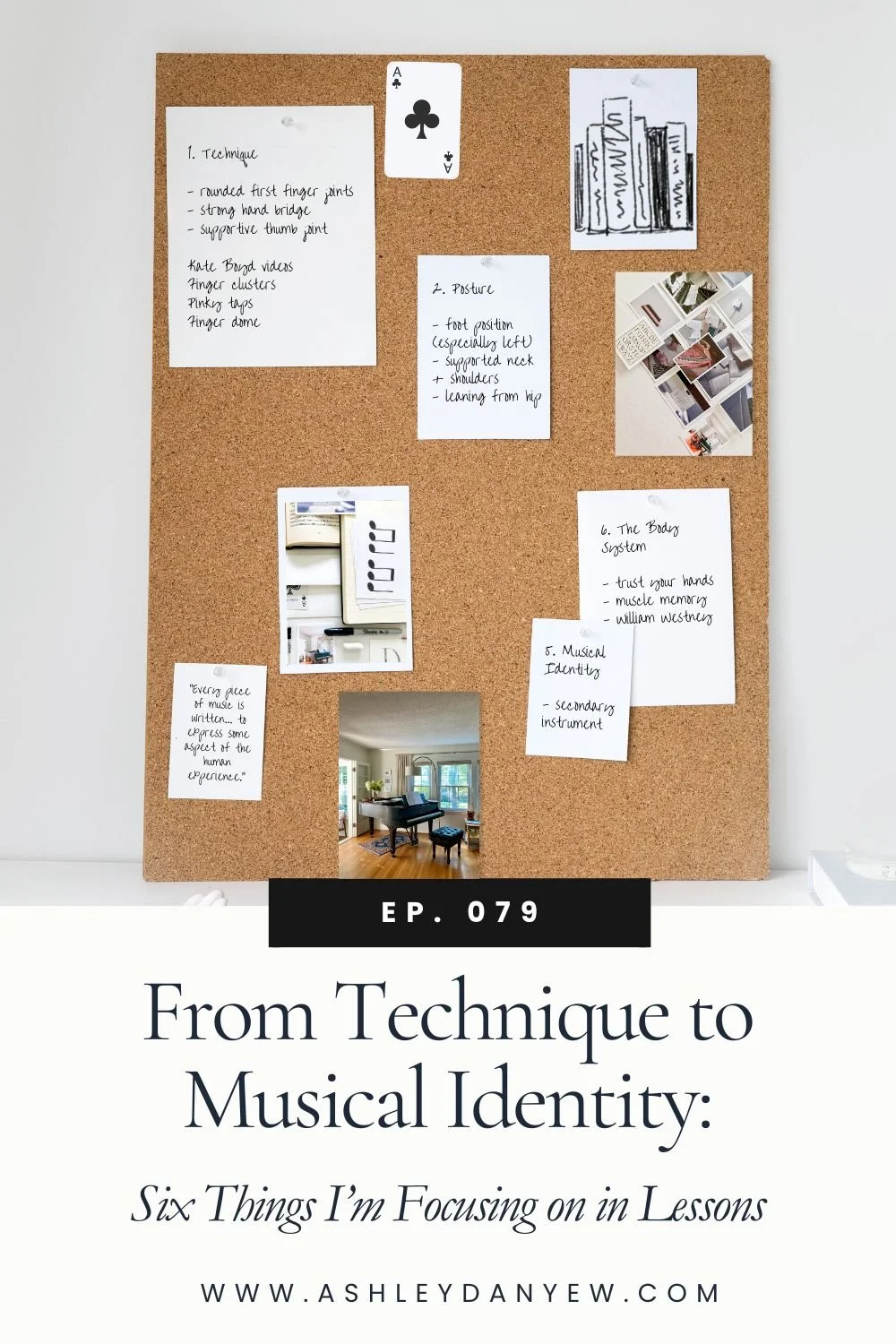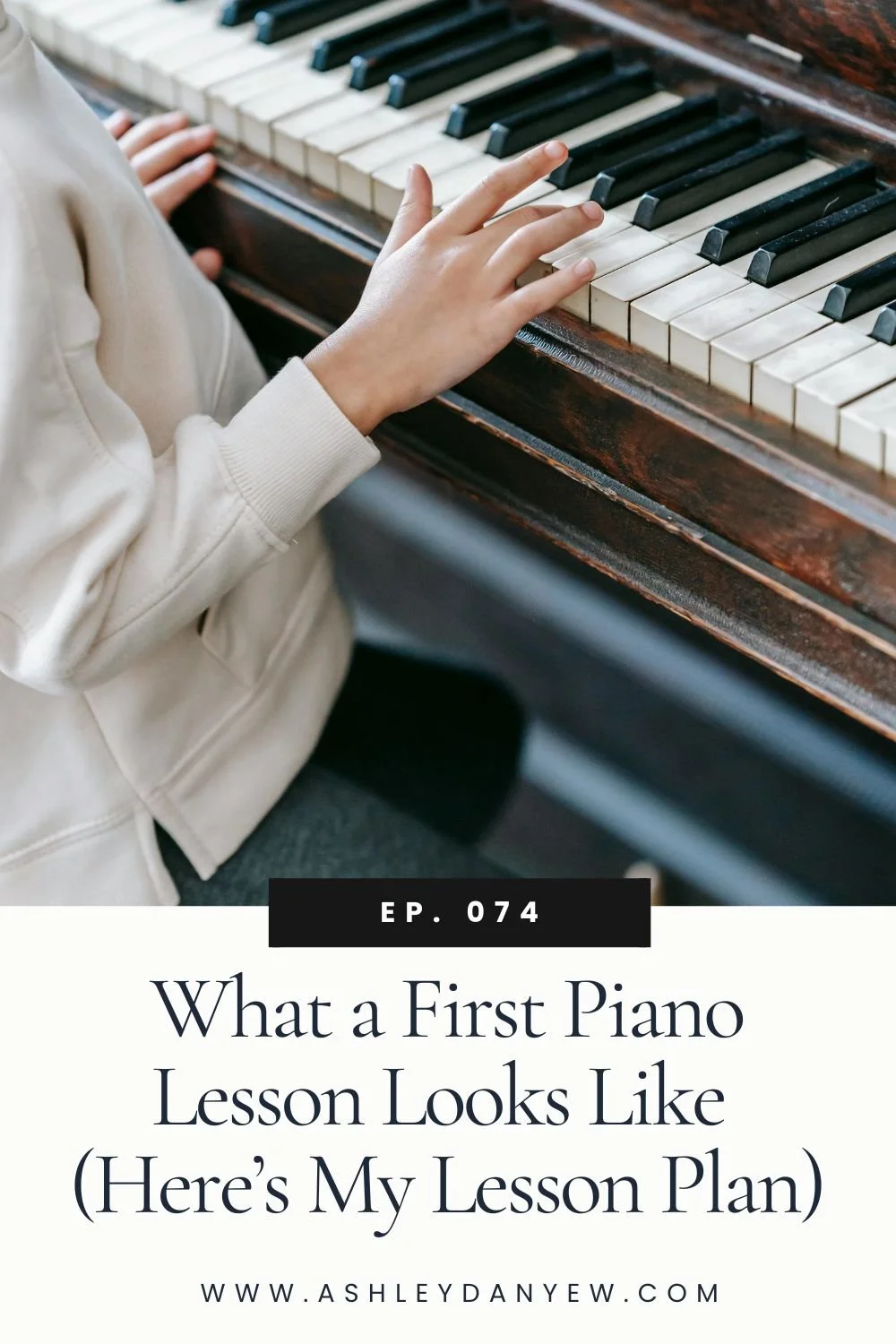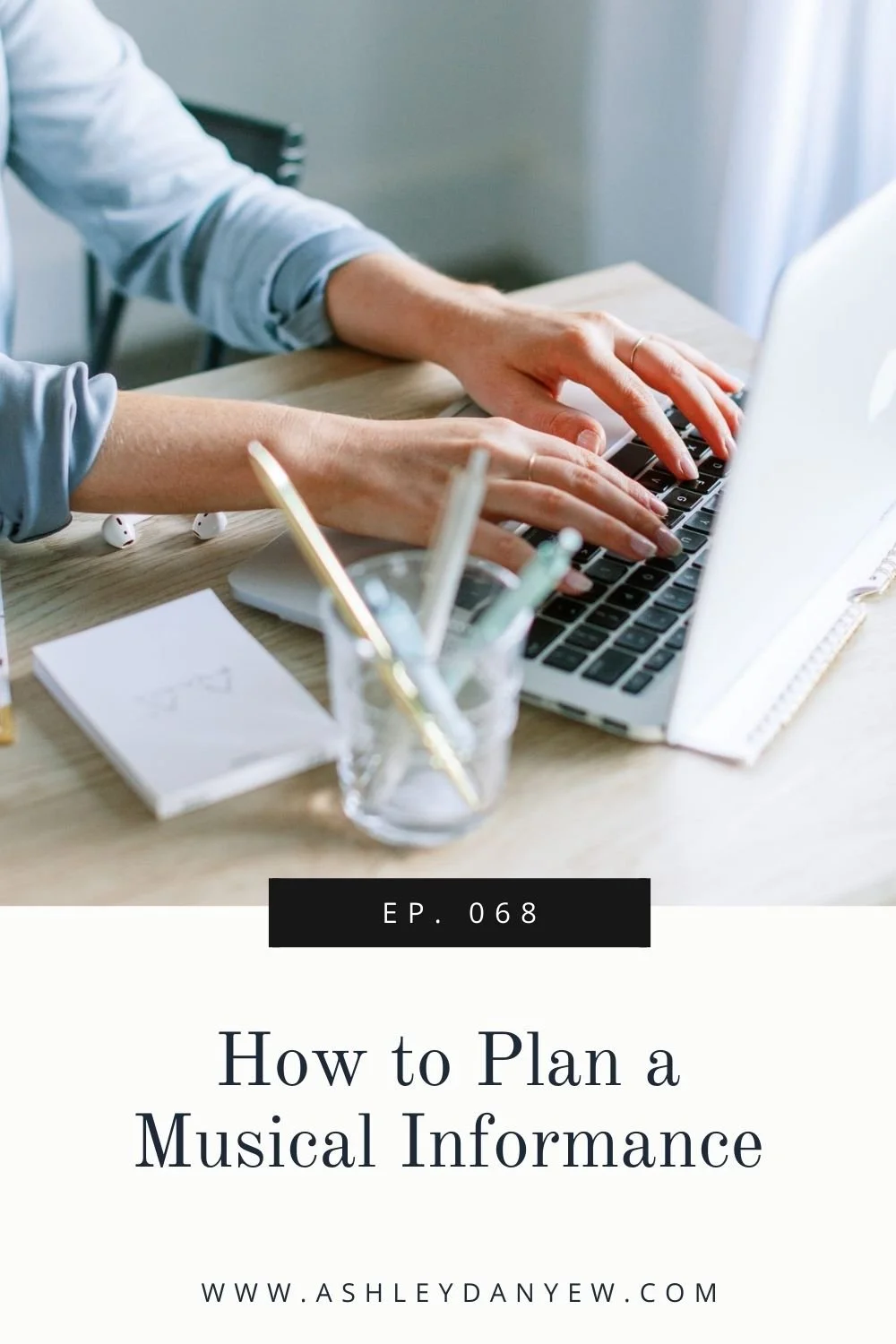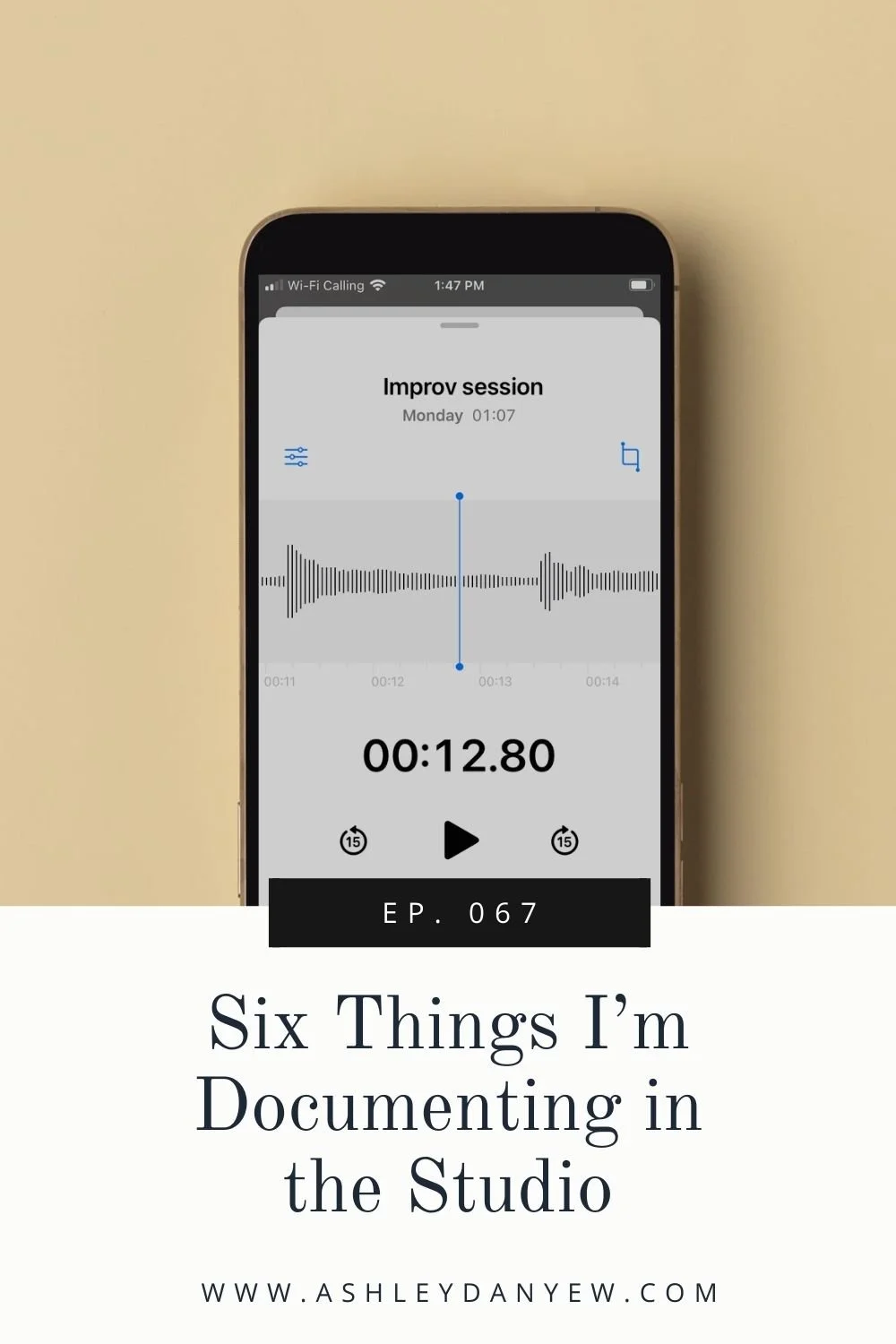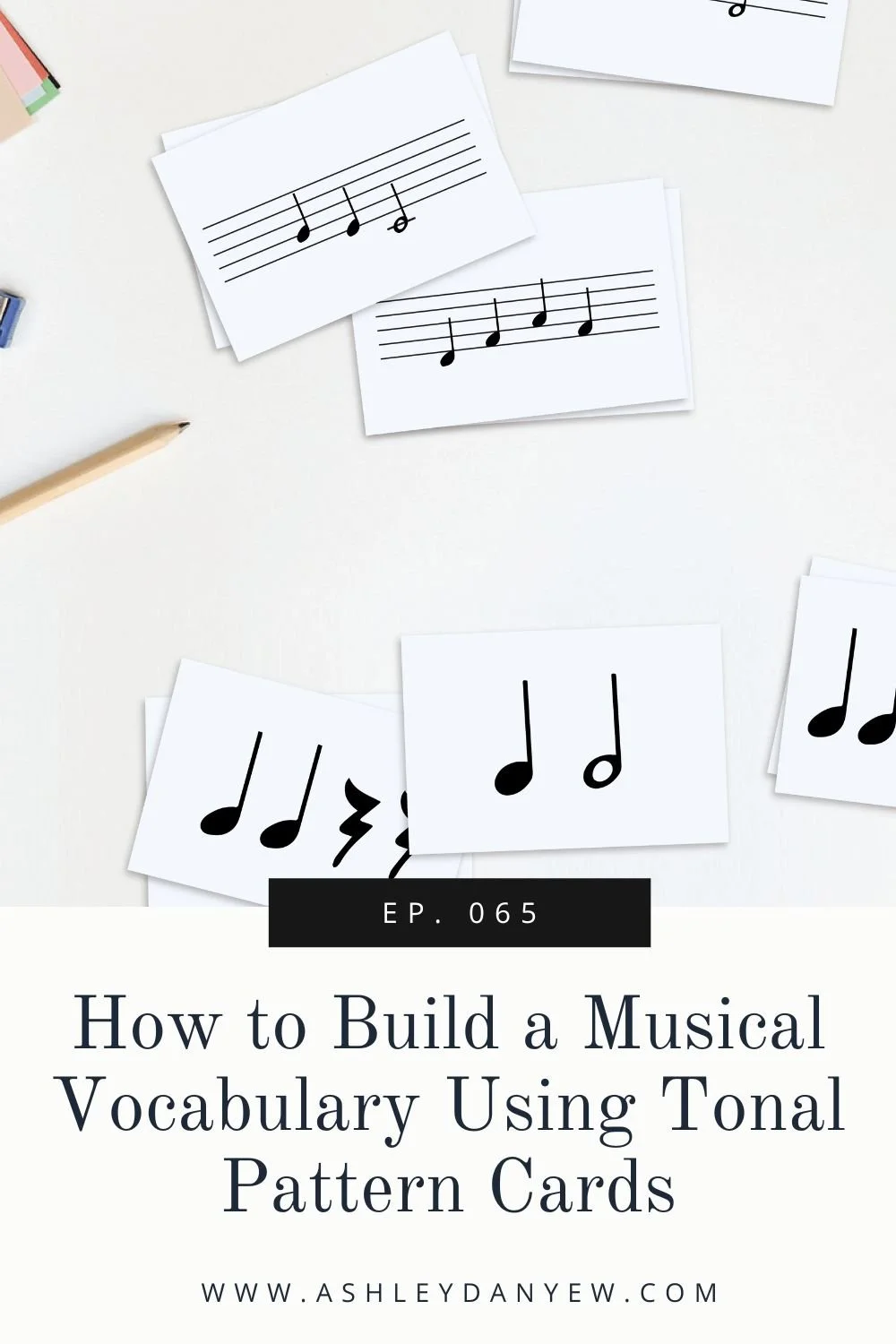Resources Mentioned
*Disclosure: I get commissions for purchases made through links in this post.
"Do you know 'Brave' by Sara Bareilles?" I asked 10-year-old Anthony in a piano lesson one week.
"Yeah," he said.
"Well, I read recently that 'Brave' and [Katy Perry's] 'Roar' have a lot of things in common. What do you think?"
"Huh. I've never really thought about it!" he said.
We listened to both songs a few times and made a list of musical characteristics on the white board. I let Anthony take the lead on what we were listening for—accompaniment style, key, tempo, vocal register, and contour—stepping in to guide the conversation, as needed. Anthony sat at a keyboard in the room, picking out parts of the melody or accompaniment as he listened.
"What about the bass line?" I asked. Anthony played along with the recording for 'Roar,' a piece he was learning on his own, and together, we picked out the first part of 'Brave' while listening. We stepped back to look at the board.
"Wow, they're basically the same song!" Anthony said.
Now, I have a question for all of you listening: is this an example of formal or informal learning? Or, is it both?
The context was formal (we were in a school classroom having a private piano lesson) but the genre and learning style were informal (popular music and learning by ear). The learning was intentional (there was an end goal) but the ownership of the experience was something that we shared (we both contributed ideas—I didn't go into the lesson with my mind already made up).
That brings us to an interesting question to ask in our teaching: What makes learning formal or informal? And can it be both? How can we balance formal and informal learning in music education?
Often formal and informal learning are presented as a dichotomy. Formal learning is learning that happens with a teacher in a structured environment and informal learning is learning that takes place out in the world, between peers, or things the student learns on their own.
In music, genre is often wrapped up in these distinctions. To generalize, classical music and sometimes jazz are taught and experienced in formal situations (like schools, lessons, and community ensembles), and pop, rock, and everything else are experienced in informal contexts (at home, in the car, with friends, in the garage band).
I want to pose this question: As music educators, can we reach a place where music learning transcends genre? Where the process, the act of making and creating music, is more important than the product?
Researcher and music educator Randall Allsup (2011) concluded that the value of music learning is not in the repertoire introduced or the style of music created; he wrote, “for the purposes of education, the location of 'value' is found in experience.”
This is a negotiated space: A place between formal and informal teaching and learning, where intentional meets incidental and power and ownership are shared by you as the teacher and your students.
Going back to the story I shared at the beginning, the learning and musical experience that took place seemed to cross the boundaries of formal and informal learning. The musical experience had formal and informal elements.
Perhaps formal and informal are not separate and distinct, but in fact, part of the same continuum. Maybe we can have both.
It’s not necessarily about content; it’s about pedagogy.
Researchers agree that the true nature of formal and informal learning is more complex than what a dichotomy can represent. The lines are blurred. There's more interaction and blending of the two forms of learning.
Educator and researcher Lucy Green (2008) has written a lot about this. She explored ways to incorporate informal learning into a formal music classroom in England. One strategy was introducing aural learning with music from the classical repertory—works that were largely unfamiliar to the students.
Students worked in groups, “listening, discussing features of the music, focusing firstly on delineations then inter-sonic meanings, choosing a piece, then beginning to select instruments, playing along with rhythms and starting to search for pitches.” The majority of students (ages 13-14) found the informal approach to learning classical music “more effective and more enjoyable than the ‘normal curriculum.’”
Green concluded that the things students found unhelpful about the normal curriculum were “not so much to do with curriculum content as with pedagogy.”
One of the teachers in the study described the following:
"I encouraged Dylan to work out the notes for the Strauss on the guitar, and him and Tom (on drums) immediately started playing together . . . . I showed Craig and Ian the basic notes on the keyboard, and Trevor where C was on the bass guitar, and then left them. When we came back to hear them perform, in the space of ten minutes they had put together their own 'rocked-up' version of the Strauss, and their enthusiasm had completely shifted to 'this is cool' . . . . After the lesson Tom said 'That was the most amount of work we have done in a lesson so far, and we did it all by ourselves.'"
In negotiated spaces like this, teachers take on the dual role of "teacher-facilitator," as I talked about in Episode 042: posing musical challenges, moderating dialogue, and asking questions that encourage careful thought and reflection.
We can craft beautiful philosophies of teaching and learning and transcribe pedagogical approaches into prosaic formulae but Randall Allsup challenged, "I wonder if what we are doing musically will remain sufficiently compelling to future generations." How can we create shared, negotiated spaces that balance formal and informal learning?
The Experiential Learning Theory
In Episode 042, I mentioned the Experiential Learning Theory (ELT), which was developed by David Kolb in 1984. I applied this theory to music education for my dissertation research. It's rooted in constructivist theory—the idea that learners build on previous knowledge to construct new learning—and the work of John Dewey, Kurt Lewin, and Jean Piaget.
The experiential learning cycle is based on two intersecting continuums: active-reflective and concrete-abstract. The continuums cross the model from side to side and top to bottom in a dynamic, negotiated exchange between teacher and student that facilitates movement around the circle.
I think ELT offers a useful framework for studying the relationship between formal and informal learning. As you create a democratic, shared space for music teaching and learning with your students, you're negotiating that continuum between informal (concrete experience in the ELT model) and formal (abstract conceptualization).
Scaffolding
The popular concept of scaffolding, coined by psychologist Lev Vygotsky can also be a helpful metaphor for balancing formal and informal learning, but Randall Allsup (2002) cautioned:
"Scaffolding . . . carries with it the potential for power imbalances. The expert may be unaware that he is leading student learners to explore concepts or techniques with which he is comfortable or familiar. There must exist creative tension around the cultural foundation of a student art work and the scaffold upon which an outside learning task is built."
That "creative tension" is the give and take between teacher and student as we balance both ELT continuums—concrete and abstract and active and reflective—and co-create a dynamic, flexible (negotiated) space for learning.
10 Ways to Balance Formal and Informal Learning in Your Teaching
John Dewey (1916) noted that the goal of education is to balance the "informal and the formal, the incidental and the intentional." How is this balance achieved? What does it look like?
Here are 10 practical suggestions drawn from the research literature for balancing formal and informal learning in a traditional music curriculum:
1. Improvise. Invite your students to improvise interval patterns, sing in parts, or create rhythm patterns in a variety of meters. These short activities promote interaction, experimentation, and autonomy, while developing confidence and building trust (Feichas, 2010).
2. Listen. Ask students to bring in a musical recording (any genre or style). Listen to the recording and ask your student to create a listening map of key musical events. Discuss this together. (Feichas, 2010).
3. Learn from recordings. Listen to a recording of a piece you are learning as an ensemble. Invite your students to listen to the music they're learning to play (or something similar) at home so they get a sense of the style (Green, 2004).
4. Develop creativity and musicianship. Give students projects that promote creativity and individual expression. Allsup (2011) recommends giving "specific musical challenges [for student groups] to consider and complete" and perform in class.
5. Reflect. Ask thoughtful questions. Researcher Heloisa Feichas (2010) invited students to consider the following: "'What do I want to learn?'; 'What skills do I think are the most important?'; 'What kind of musical knowledge is required so that I become a good musician?'"
6. Compose freely. Invite your students to create and perform original compositions, written for the instrumentation in the class. Provide opportunities for them to rehearse together, share experiences, and learn from each other (Feichas, 2010).
7. Compose in s specific style. After comparing Purcell's "Dido's Lament" and Led Zeppelin's "Dazed and Confused," each based on a passacaglia, Randall Allsup (2011) asked his grad students (in small groups) to compose their own laments, built on a passacaglia. The purpose of assignments like this is to "introduce students to new ways of learning, composing, and interacting musically," Allsup wrote.
8. Arrange. Invite your students to create arrangements of their favorite popular music pieces (Allsup, 2011; Feichas, 2010). Encourage them to do their own research, be creative problem solvers, and take ownership (Allsup, 2011).
9. Establish a musical context. Instead of playing John Lennon's "Imagine" for the class, Allsup (2011) began by vamping on the two chords that constitute much of the harmonic structure of the work: C7 and F7. After establishing a musical context through class improvisation, students had greater appreciation for "Imagine."
10. Work together. Collaborative, peer learning is at the heart of the informal music learning experience (Allsup, 2011; Feichas, 2010; Green, 2004). Create opportunities for students to work together in small groups, play in chamber ensembles with their peers, improvise and compose together, share ideas, and be creative.
The key is creating balanced, negotiated spaces that incorporate all four parts of the experiential whole: informal, concrete experiences and formal, abstract conceptualizations; active experimentation and reflective observation.
I’d love to hear from you:
I hope this inspires and encourages you to think about ways that you can carve out some negotiated space in your teaching practice—that place between formal and informal learning where ownership is shared and negotiated by all. What will this look like for you and your students?
References
Allsup, R. E. (2011). Popular music and classical musicians: strategies and perspectives. Music Educators Journal, 97(3), 30–34. https://doi.org/10.1177/0027432110391810
Allsup, R. E. (2002). Crossing over: Mutual learning and democratic action in instrumental music education, PhD diss., Teachers College, Columbia University.
Dewey, J. (1916). Democracy and education: an introduction to the philosophy of education. New York: MacMillan.
Feichas, H. (2010). Bridging the gap: Informal learning practices as a pedagogy of integration. British Journal of Music Education. 27, 47-58. 10.1017/S0265051709990192.
Green, L. (2004). What can music educators learn from popular musicians? Bridging the gap: Popular music and music education, 225-240.
Green, L. (2008). Music, informal learning and the school: A new classroom pedagogy. Ashgate Publishing, Ltd.
Kolb, D. A. (1984). Experiential learning: Experience as the source of learning and development. Prentice Hall. https://doi.org/10.1604/9780132952613





